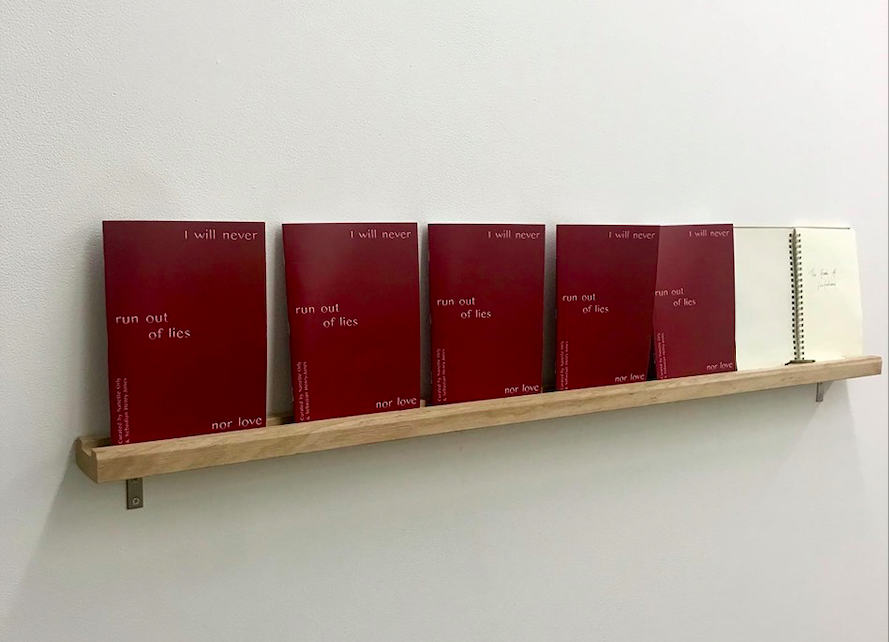
Growing up close to the beach on the Central Coast of NSW, June Miskell had “a very active and outdoorsy childhood”.
“But I’ve loved art from a very young age so, whenever I was indoors, I would spend most of my time drawing, painting and making little illustrated books,” she says. “Initially, I wanted to be an artist or art teacher.”
June changed her mind about her future career in the later years of high school, when she became engrossed in art history and theory.
“I got to the point where I would genuinely look forward to art theory rather than practical classes. I found it a lot more exciting to have discussions about art and writing art essays than making art myself,” she says.
On the weekends, June took regular train trips to Sydney to visit the Art Gallery of New South Wales (AGNSW) and the Museum of Contemporary Art (MCA).
“It was where I was first exposed to a wide array of contemporary artistic practices and I began thinking about a career as a curator. At the time, I had an understanding that the only options in the arts was to be either an artist or a curator.”
After finishing school, June continued her interest in art history and theory and enrolled in a Bachelor of Art Theory (Honours) at UNSW Art & Design. She says the degree appealed because it emphasised the interdisciplinary ways of understanding and working with art theory by focusing on criticism and writing, visual culture, curating, and also looking at institutions and museums.

“As I was unsure which area I would focus on and put energy into, I wanted to learn about and engage with as many areas as I could. The degree simultaneously offered me depth and flexibility to explore multiple areas of interest. I became increasingly engaged and fascinated with other areas related to the arts, such as writing and research.”
While studying full time, working part time and commuting from the Central Coast, June still managed to undertake a number of volunteering, internship and assistant roles during the first half of her degree.
“I was eager to experience the various types of organisational working environments across multiple sectors in the arts, and how they each facilitated engagement with artists, theorists, administrators and audiences.
“I’ve been fortunate enough to have had this experience across regional, state and independent institutions such as Gosford Regional Gallery, AGNSW and the MCA, artist-run initiative/organisation Firstdraft, student-led Kudos Gallery, as well as local and national arts festivals including BEAMS Art Festival and the Biennale of Sydney,” June says.
“Across these experiences, I’ve had the opportunity to engage with some really exciting contemporary artistic practices, curators and exhibitions and learn from and with people I admire.
June says these opportunities, along with the critical knowledge and understanding of art theory, gave her a strong foundation for her professional and personal development. Alongside these practical and tangible experiences, she values the “interpersonal and intimate and support networks” she established.
In 2018, she received the Kudos Gallery Emerging Critics Award which provided a mentorship with Runway Journal editor Tai Mitsuji. With his editorial support and constructive feedback, she developed a piece that was later published in Runway Conversations. While studying, June has been working at AGNSW in visitor experience and the gallery shop. She also does freelance writing.

“After completing my honours thesis this year, I’m excited to take some time off from studying to continue working in the arts sector, doing freelance arts writing and becoming more active in the communities and groups that I’m part of before pursuing higher degree research.”
Come December, she will take part in the A&D ANNUAL 19 Graduate Exhibition. June and her honours cohort are looking forward to hosting a symposium with short presentations on their theses. They hope to start conversations about the artists, institutions and theories they explore.
June has been researching interdisciplinary artist Bhenji Ra, including her dance and performance practice as well as her contributions to QPOC (Queer People of Colour) infrastructure.
“Being queer and Filipino and embedded in these communities, I’m invested in spending time understanding and carefully theorising her work and her contributions to QPOC infrastructure, within the context of Australia’s white [art] spaces.”
